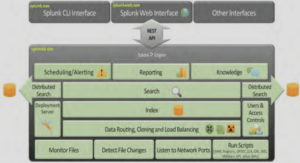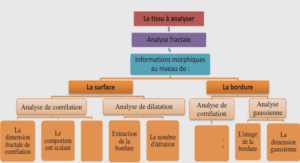Today, wireless communication applications have become a major part in our life. Almost every day we check our emails either on smartphones or on personal computers via Wireless Local Area Network (WLAN) connections. Besides we communicate via our mobile phones or we consult navigation systems or online maps to find our way in case we have lost our bearings. Especially for the young generation it is impossible to imagine living in a world where they cannot be connected to their friends at any place and at any time. More and more companies have recognized this trend and seek to bring new products to the market that integrate more applications in only one device, that is smaller and lighter, that costs less and that has a higher performance than competing ones.
Another interesting market for wireless communication devices can be found in the automotive industry. It is a well known fact that the demographic change leads to a rising percentage of old people, especially in Europe. In countries like Germany where there is no age limit for car driving, there is a high need for new safety applications like speed measurements, obstacle warnings or distance measurements to the car driving in front. Two key terms in this context are Car-toCar communication (C2C) and Car-to-Infrastructure (C2I) communication which also include the provision of non-safety applications like toll collection, tourist information or mobile internet. Standards of interest are IEEE 802.11p which is an enhancement of the well known IEEE 802.11a standard used for WLAN connections, and ETSI DAB (Digital Audio Broadcasting). To combine these two standards, two approaches are imaginable. Either they are implemented individually and come with their own receivers and transmitters that have to be integrated in the car, or both of them are combined in only one device. As it is the case for the mobile phone market, these devices should be small, cheap, of high performance and should be easily adaptable to future standards. Especially the latter is very time consuming and costly when integrating separate standard technologies in a car. Therefore, a single architecture that is capable to process whatever wireless communication standard is the preferable solution, especially as there is a high interest in combining IEEE 802.11p with LTE (3GPP Long Term Evolution) in vehicular system in the near future. To deal with these increasing requirements for reconfigurable radio architectures is a very challenging task. One solution can be found in the context of Software Defined Radio (SDR). A major aim of SDR is to provide flexible platform solutions supporting a wide range of different wireless communication standards in a multimodal fashion. This approach does not only come with the advantage of a faster development and a faster deployment of new standards but also with the automatic adoption to the surroundings.
As initially stated, we exemplify the execution of latency critical standards on the ExpressMIMO platform by means of the IEEE 802.11p standard. We further investigate in the combination with a DAB receiver. As IEEE 802.11p has been in draft version till July 2010, efficient physical layer receiver implementations are still an open research topic. And to our knowledge, so far little effort has been spent on the description of a possible multimodal SDR platform processing of these two standards of interest.
The chosen target platform is the OpenAirInterface ExpressMIMO platform developed by Eurecom and Télécom ParisTech. In contrast to other SDR platforms, the baseband processing functions are split over several independent Digital Signal Processor (DSP) engines or hardware accelerators like Channel De/Encoder, (De)Interleaver or Front-End Processor (FEP) which can be executed in parallel. This enables not only a higher performance of the whole design but further allows an easy component replacement in case future updates become necessary. The platform is capable to process up to eight different channels simultaneously (four channels in transmission, four in reception) by reusing the existing programmable resources. Main design challenge is the synchronization of these resources by providing a maximum accuracy and by meeting all the real-time requirements. The platform can further be emulated with the Library for ExpressMIMO baseband, called libembb, enabling an easy receiver validation and verification in a pure software environment.
At the very beginning of this thesis, the work on this platform was still ongoing. The presented receiver is thus the very first complete design that has been developed and evaluated on this target platform and that was emulated with the help of libembb. It was therefore serving as a first proof of concept of the whole design. Executing standards that operate on very small vector lengths, like IEEE 802.11p, require a fast baseband processing engine. So choosing this standard as a first use case permitted us to evaluate the current platform design to find bottlenecks and possible solutions to overcome them. To pave the way for a complete receiver chain, the Preprocessor prototype had to be designed. The latter connects the external Analog to Digital (A/D) and Digital to Analog (D/A) converters with the entire platform and embeds among others a Sample Rate Converter (SRC) for sample rate adjustment and I/Q imbalance correction.
To achieve all these contributions, the basic objectives have been grouped in five different tasks which are more detailed in the following:
1. The first step is the emulation of the IEEE 802.11p receiver with the help of the Library for ExpressMIMO baseband (libembb) to (1) validate the chosen algorithms in a pure software environment, (2) to verify if the platform functionality is sufficient for the IEEE 802.11p receiver design and (3) to obtain first performance figures based on the pure processing time of the DSP engines. This task is an iterative one. In case it already turns out at this step, that real-time processing is not possible even when neglecting the communication overhead, the algorithms have to be reworked and verified again.
2. After a successful completion of the first task, the development continues with the implementation of the IEEE 802.11p receiver and its performance evaluation on the ExpressMIMO platform. This proof of concept comprises a cycle accurate simulation in Modelsim and the receiver validation on the real hardware platform.
3. Once the work on the IEEE 802.11p receiver is finalized, we focus on the question how DAB and IEEE 802.11p can be executed simultaneously on the ExpressMIMO platform. Due to different standard properties, this task is very challenging. For the implementation of a scheduler prototype we recall the performance figures obtained with libembb to derive basic guidelines for an efficient standard scheduling.
4. The identification of design bottlenecks and the provision of possible solutions is related to the tests on the hardware platform as mentioned in the second task. Based on the obtained results, possible algorithmic and design improvements are identified and possible solutions are provided and implemented.
5. To complete the IEEE 802.11p receiver chain, the final task includes the implementation of a Preprocessor DSP engine prototype. Here we mainly focus on the SRC as the most critical part of the Preprocessor in terms of area and space consumption.
1 Introduction |






